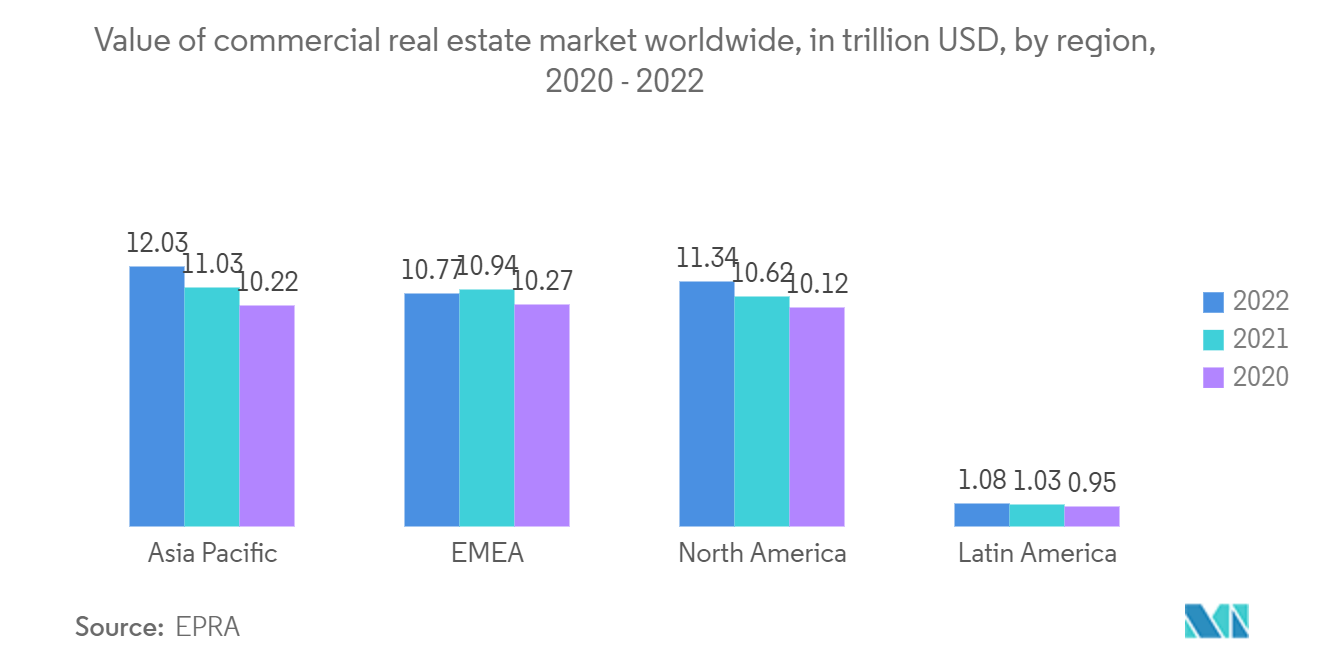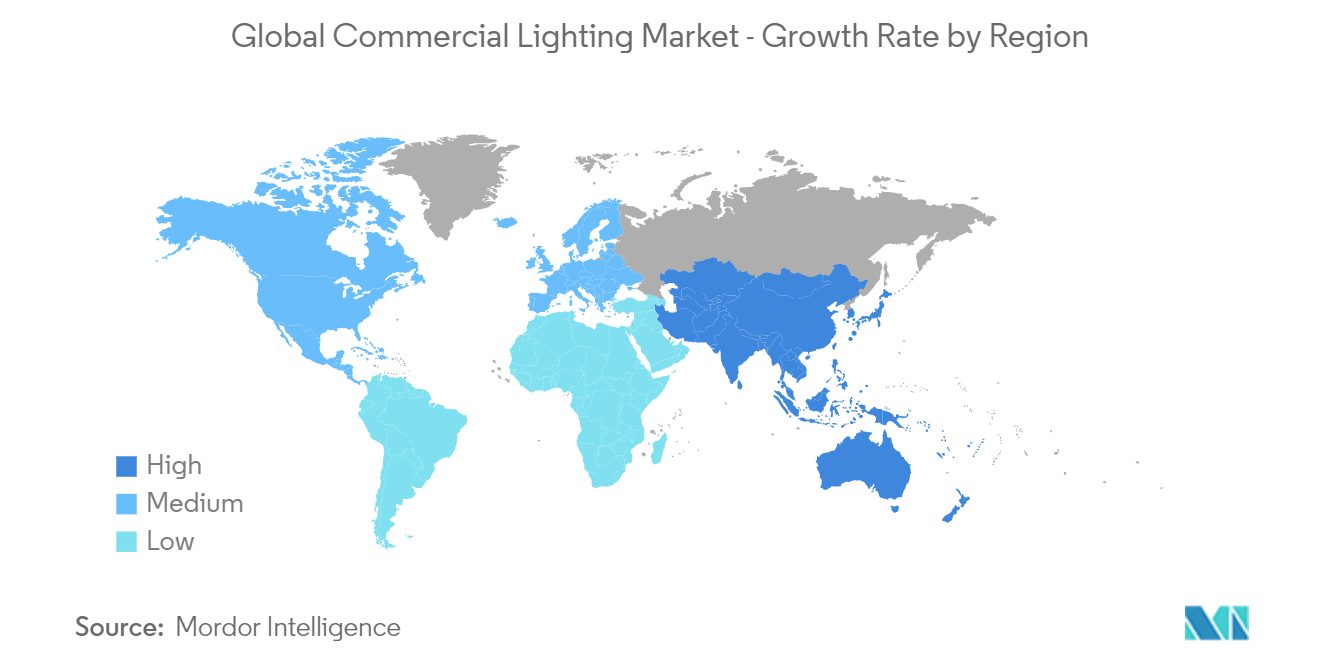Market Trends of Commercial Lighting Industry
Commercial Offices segment to maximum market share
Commercial office lighting is one of the work environment's most frequently disregarded and undervalued elements. Picking the appropriate workplace lighting fixtures might be among the wisest financial decisions. It can affect customer happiness, building security, personnel morale, and productivity in addition to the former.
Government structures, medical facilities, workplaces, retail establishments, institutions, and other locations frequently employ commercial office lighting. Commercial-grade lighting is robust and may use cutting-edge technologies to boost efficiency and user-friendliness. Office lighting may influence visitors' and employees' moods, improve productivity, and improve the visual attractiveness of the area. The ideal workplace lighting conforms with safety standards, creates a comfortable environment, and offers an appropriate mix of natural and artificial light.
Commercial lighting systems could also have intelligent controls, including sensors, dimmers, timers, programmable lighting systems, and LED technology. By automatically altering lighting settings based on occupancy, daylight levels, or time of day, these controls can assist in optimizing energy consumption and produce additional energy savings. Commercial areas can benefit from intelligent lighting controls that provide customized lighting settings, remote control, and interaction with other building management systems.
The main growth drivers are tightening laws regarding inefficient lighting systems and increasing government initiatives to promote sustainable development. The market's rise has been fueled by a sharp reduction in Light-Emitting Diode (LED) pricing and global energy policy changes. Furthermore, using attractive incentives and rebates offered by the governments of various nations for the use of LED lighting would boost demand.
The advantages that LED lighting provides, like its ability to switch on and off in a millisecond and its capacity to save money and extend product life, drive market demand for the technology. Demand is predicted to increase due to the benefit of directed, controlled light. Technological developments and the availability of different design alternatives for fixtures and lights owing to their compact shape and characteristics, such as daylighting, occupancy sensing, dimmability, and timer, are projected to affect the growth favorably. The industry has grown further due to governments' energy conservation initiatives, which offer financial incentives and enticing refunds to people and businesses in commercial settings.
According to EPRA, The value of the worldwide commercial real estate market is predicted to reach USD 35 trillion in 2022, up from around USD 34 trillion the previous year. With a market size of over USD 12 trillion, the Asia-Pacific area outpaced North America in terms of size.
Moreover, office spaces are evolving away from the individual cubicle setting in favor of an open-office environment. In this new, open environment, the ambient room lighting is focused on creating a sense of unity and community in the room and among workers.

China in the Asia-Pacific region to exhibit highest growth rate
Products for lighting are crucial for infrastructure, daily living, and industry. The mainland's need for illumination is growing along with China's economy and rising living standards. China has been the world's top producer and consumer of lighting for the past 20 years because of the lighting industry's fast development.
Organic light-emitting diodes (OLEDs), compact fluorescent lamps (CFLs), electrodeless discharge lamps (EDLs), and light-emitting diodes (LEDs) are some of the most popular items. To draw clients, Chinese businesses are investing more money in lighting malls. Office, school, and hospital lighting have all significantly improved.
China has been promoting environmental protection and energy conservation. A succession of policies and regulations, such as The Energy Conservation Law of the People's Republic of China and Opinions on Accelerating the Development of Energy-saving and Environmental Protection Industries, is driving the development of environmental protection services. At the same time, promoting energy-saving and eco-friendly products is creating greater demand for energy-efficient lighting. The priority given by China to the policy of developing energysaving and environmental protection industries is propelling the development of LED lighting.
Moreover, LED lights are rapidly replacing conventional lighting products in China. The Chinese government is also significantly driving the sector's growth by offering large-scale subsidies for adopting LED products. Moreover, the Chinese government has also banned incandescent bulbs, with the National Development and Reform Commission first announcing the country's incandescent bulb phase-out roadmap in November 2011.
As China's LED Lighting enterprises have gradually come of age, they have begun aggressively developing overseas markets. For example, Forest Lighting has merged with Germany's LEDVANCE, while Opple Lighting has set up several overseas subsidiaries. Meanwhile, mainland lighting companies have expanded their domestic presence by setting up display centers and adding specialty stores. In the future, mainland enterprises are expected to invest more in technology and innovation to increase the added value of their products and raise their competitiveness.

